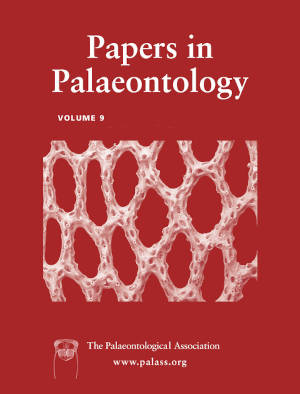Article: First report of silicified wood from a late Pennsylvanian intramontane basin in the Pyrenees: systematic affinities and palaeoecological implications
Publication: Papers in Palaeontology
Volume:
9
Part:
5
Publication Date:
2023
Article number:
e1524
Author(s):
Aixa Tosal, Anne-Laure Decombeix, Brigitte Meyer-Berthaud, Jean Galtier, and Carles Martín-Closas
DOI:
10.1002/spp2.1524
Abstract
Abstract The first anatomically preserved wood specimens of an upland Carboniferous flora from the Iberian Peninsula are reported from the Erillcastell Basin (Eastern Pyrenees, Catalonia, Spain). Two taxa are described, a calamitacean Equisetales (Arthropitys sp.) and a Cordaitales (Dadoxylon sp.). The Arthropitys specimen has fusiform multiseriate rays composed of square parenchyma cells with conspicuous uniseriate or multiseriate simple pits. These pits are located near the transverse walls and occasionally in the tangential walls. The tracheids vary in lumen size, with scalariform-bordered pits on their radial walls and multiseriate pits in their cross-field areas. The Dadoxylon specimen commonly has uniseriate fusiform rays. The tracheids are long, with a square shape in transverse section. Their radial walls bear araucarian pitting with a uniseriate to triseriate arrangement. The pits are circular with a spindle-shaped aperture. Comparison of the Erillcastell specimens with coeval species from Europe indicates that they could belong to new species. The good preservation of the new fossil wood yields significant palaeoenvironmental information. The lack of marked growth rings in both specimens and the presence of tyloses in Dadoxylon suggest that the climate in the intramontane basins of the Pyrenees was slightly seasonal towards the end of the Carboniferous. This contrasts with the marked seasonality of coeval lowland basins. Such upland habitats may have enhanced the survival of plants adapted to humid conditions in a global context of increasing aridity.
